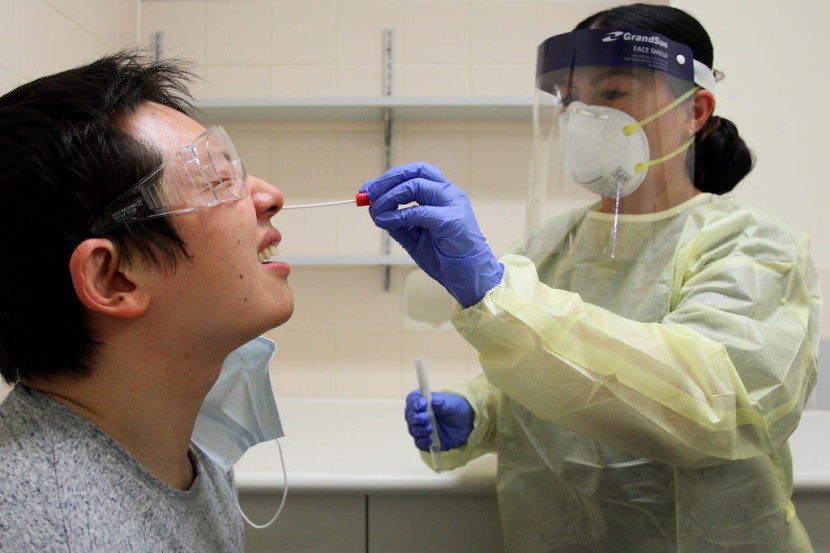
A Facebook post circulating online that has been shared over 16,000 times claimed that the nasal swab, which is popularly used in collecting biological samples for active SARS-CoV-2 infection that is known as the virus causing the Covid-19, abrades and injures the blood-brain barrier (BBB) causing more serious medical concerns. This claim is said to be incorrect since this is anatomically impossible.
The swab practiced in diagnosing Covid-19 does not involve brushing the blood-brain barrier. Rather, it is situated in the nasopharynx, which is a cavity located behind the nose where the most amount of obtainable virus can be accumulated, Health Feedback posted.
The nasopharyngeal swab that is widely being used to detect Covid-19 may cause discomfort that reaches far back into the nose. But the claim saying it damages and scrapes the blood-brain barriers is completely anatomically impossible. The process of swabbing does not reach and hurt the blood-brain barrier, where the brain and blood vessels exchange essential nutrients.
On Tuesday, a viral Facebook post that has over a million views shared an illustration of the swab test of the nasopharyngeal next to an anatomical image of the brain, claiming the test being widely used in determining the presence of the coronavirus in a patient's body damages the blood-brain barrier.
With a raised eyebrow emoji, the post suggested that the swab is exactly being placed on the blood-brain barrier.
One Facebook user shared the same post, saying this is the reason why people are being pushed to undergo swab tests regardless of showing symptoms of the disease or not.
According to Reuters, Dr. Morgan Katz, John Hopkins University's assistant professor of medicine, stated the circulating posts online fundamentally misunderstood what actually happens during the swab testing.
As stated by Katz, in order for the swab to get anywhere close to the blood-brain barrier, it needed to go through layers of fascia and muscles, and also the base of the skull that is a thick bone, adding that it is really impossible for the swab to injure the blood-brain barrier.
Ideally, the respiratory specimen is being gathered from the nasopharynx, which is an area located between the back of the nose and throat where most respiratory viruses live, USA Today cited.
According to Katz, the nasopharynx is the part of the body where the highest yield of respiratory viruses is expected.
It is valid that the blood-brain barrier plays a vital role in keeping harmful toxins away from the brain and delivering essential nutrients into it. Viruses like meningitis can give rise to inflammation in the area, but it is impossible for nasal swabbing to have this result.
Katz uttered that being infected with a harmful virus put someone at a higher risk of damaging the blood-brain barrier than by being tested for that virus.
While the nasal swab is the most prevalent way of collecting respiratory specimens that can be tested to detect the presence of the coronavirus, it was stated by the Centers for Disease Control and Prevention that it is one of the five admissible procedures of collection. Details regarding the different methods of specimen collection allowable in determining the presence of the coronavirus in the person's system is available on the agency's website.
Related article: Fact Check: Does Wearing Face Mask Causes Oxygen Deficiency?








